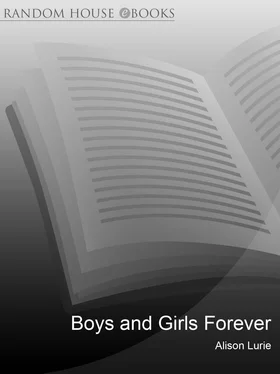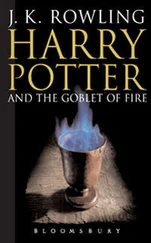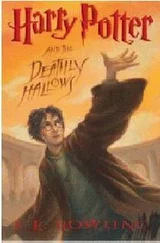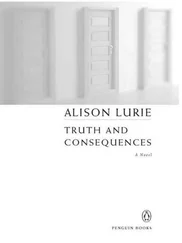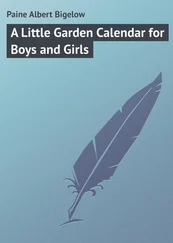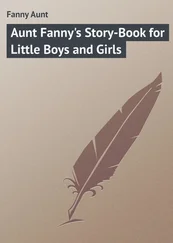In Frank Baum’s Oz, women rule all the good societies and some of the bad ones. At the start of the series the Emerald City is governed by a man, the Wizard of Oz, but it presently becomes clear that he is an incompetent phony with no magical powers. For a short time after volume 1 the Emerald City is governed by Dorothy’s friend the Scarecrow, but by the end of the second volume, and for the remainder of the series, not only the capital but the entire Land of Oz has a female sovereign, Princess Ozma: a pretty little girl who began life under an enchantment as a pretty little boy.
For Matilda Gage witches were not necessarily evil. Even after the triumph of patriarchy, she maintained, some women continued to observe the beliefs and rituals of earlier times. The witches of the late medieval and early modern age, she claimed, were pagan priestesses, skilled in healing. (Gage’s views on this subject, according to an excellent recent study by the British historian Ronald Hutton, The Triumph of the Moon , would have a formative influence on the early-twentieth-century revival of paganism and witchcraft in Britain.)
When Dorothy first arrives in Oz by cyclone, the land is divided into four countries, two governed by good witches and two by wicked ones. Ozma is aided and advised by a beautiful young woman, Glinda the Good, originally known as the Good Witch of the South. (Later, after objections from readers, Baum referred to her only as “a powerful sorceress.”) Their relationship is that of a wise, affectionate mother and her daughter. Like Matilda Gage, Glinda is nearly always right about everything, and when there is a crisis she has the magical solution. Troubles and dangers occur in all of Baum’s fourteen Oz books, of course: if they didn’t there would be no plot. But in every case, whenever things look darkest, either Ozma or Glinda or Dorothy, or more than one of them, is there to rescue the good characters, administer justice, and restore order.
As some critics have suggested, from a religious point of view the Land of Oz is ruled by a female trinity, all of them eternally young and beautiful: Glinda, who appears to be in her early twenties; Ozma, who in The Tin Woodman of Oz (1918) is said to be fourteen or fifteen; and Dorothy, who is “much younger” than Ozma. 8As in the Christian Trinity, it is the junior member of the group, Dorothy, who most often goes out into the world to help people in trouble. The senior member, on the other hand, sometimes takes a position of benevolent detachment. There is an interesting scene in Baum’s final book, Glinda of Oz (1920), in which Glinda suggests that Dorothy and Ozma should forget about the two warring kingdoms whose problems they have heard of, remarking:
“Had you not learned of the existence of the Flatheads and the Skeezers, through my Book of Records, you would never have worried about them or their quarrels. So, if you pay no attention to these peoples, you may never hear of them again.”
“But that wouldn’t be right,” declared Ozma. “I am ruler of all the land of Oz, . . . it is my duty to make all my people—wherever they may be—happy and contented and to settle their disputes. . . .” 9
In the world of Oz, at least half of the many eccentric sub-societies also have female rulers. Not all of them are benevolent, but their faults are, in early-twentieth-century terms, more feminine than masculine. Some are willful and greedy; others are vain, idle, and self-centered like Queen Coo-ee-oh in Glinda of Oz or Princess Languidere in Ozma of Oz (1907), who devotes most of her time to trying on the thirty beautiful heads she owns and admiring herself in the mirror. Here too there may be a feminist message. When the book appeared, it was just becoming possible for a respectable woman to use rouge and powder and hair dye in order to alter her appearance temporarily. But many radical feminists of the time, like those of our own era, scorned this sort of artifice, and Baum seems to have shared their views.
Dorothy, like Matilda and Maud Gage, is clearly a New Woman. Her virtues are those of a Victorian hero rather than a Victorian heroine: she is brave, active, independent, sensible, and willing to confront authority. In Ozma of Oz the vain Princess Languidere becomes interested in Dorothy’s head:
“You are rather attractive,” said the lady presently. “Not at all beautiful, you understand, but you have a certain style of prettiness that is different from that of any of my thirty heads. So I believe I’ll take your head and give you No. 26 for it.”
“Well, I believe you won’t!” exclaimed Dorothy. . . . “I’m not used to taking cast-off things, so I’ll just keep my own head.” 10
In Dorothy and the Wizard of Oz (1908) Dorothy and her cousin Zeb are caught in an earthquake and fall through a crack in California into a magical world. Zeb is terrified, but Dorothy remains calm, and talks back to the evil Sorcerer of the Mangaboos, unfeeling vegetable beings covered with thorns.
The Sorcerer . . . looked towards the little girl with cold, cruel eyes. . . .
“Why have you dared to intrude your unwelcome persons into the secluded Land of the Mangaboos?” he asked, sternly.
“Cause we couldn’t help it,” said Dorothy. . . .
“Prove it!” cried the Sorcerer.
“We don’t have to prove it,” answered Dorothy, indignantly. “If you had any sense at all you’d known it was the earthquake.” 11
Later Dorothy is equally unimpressed by a caveful of baby dragons who boast of their long aristocratic pedigree:
“Well,” said Dorothy, “I was born on a farm in Kansas, and I guess that’s being just as ‘spectable and haughty as living in a cave with your tail tied to a rock. If it isn’t I’ll have to stand it, that’s all.” 12
In The Emerald City of Oz (1910) Dorothy comes to stay in Oz permanently; she is made a princess and given elegant and luxurious quarters in the palace (lovingly described by Baum, who adored theatrical display). Yet in spite of the delights of the Emerald City, Dorothy is soon bored and eager to go on new adventures.
Betsy and Trot, the little American girls who are the heroines of two later Oz books, are equally adventurous and confrontational: Betsy, like Dorothy, even stands up to the evil Nome King. After their adventures are over, they also get to stay in the palace and are assigned jewel-trimmed suites near Dorothy’s. The only boy hero of the series, Ojo, in The Patchwork Girl of Oz (1913), however, receives merely “a nice house just outside the walls of the Emerald City,” 13though his companion, the Patchwork Girl, is allowed to live in the palace.
Like Dorothy, these alternative child heroes are always accompanied by what folklorists call Animal Helpers. Baum’s remarkable powers of invention are in evidence here: Betsy has her mule, Hank; and Trot has a four-legged bird with a helicopter tail, the Ork. Ojo is joined on his travels not only by the Patchwork Girl, but by a clever, coldhearted Glass Cat and a good-natured square wooden dog called the Woozy. The boy Tip, who later becomes Ozma, not only has the good-natured and tireless Sawhorse for a companion, but a strange flying creature called the Gump, who has been put together out of two sofas, a collection of feather dusters, and the stuffed head of an antelope.
One of the themes of the early feminist movement was the presentation of housework as oppressive, since it was unpaid, underappreciated, and physically exhausting—far more exhausting, of course, in an era before frozen food, washing machines, refrigerators, and vacuum cleaners, when vegetables had to be canned, clothes and floors scrubbed, ice chopped, and carpets beaten by hand. Baum seems to share this view. In the first volume of his series, The Wizard of Oz , the Wicked Witch of the West, as Osmond Beckwith puts it, “‘tortures’ Dorothy by making her do housework.” 14In Glinda of Oz Dorothy refuses to sweep and dust and wash dishes for The King of All Spiders, even under severe threat.
Читать дальше
